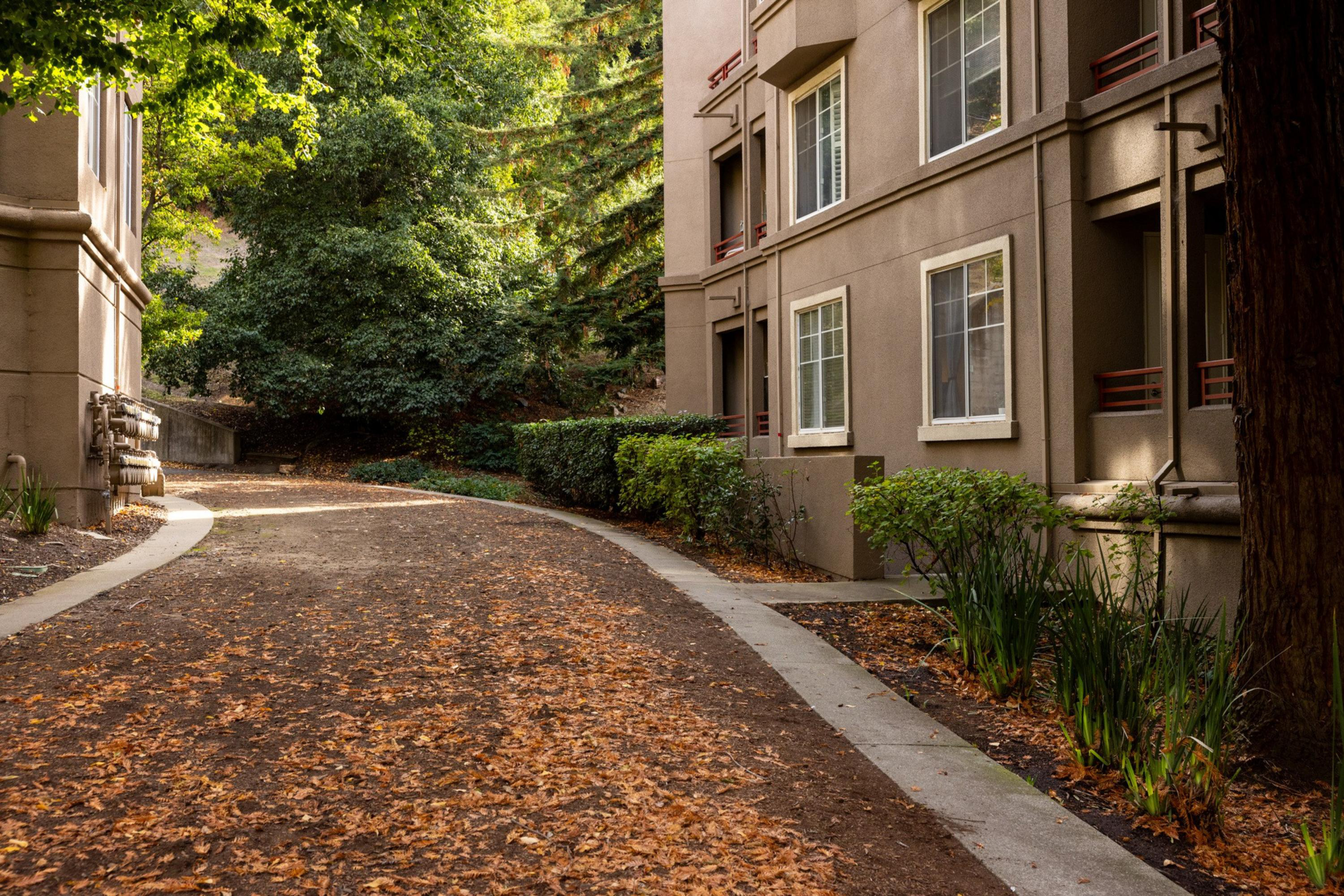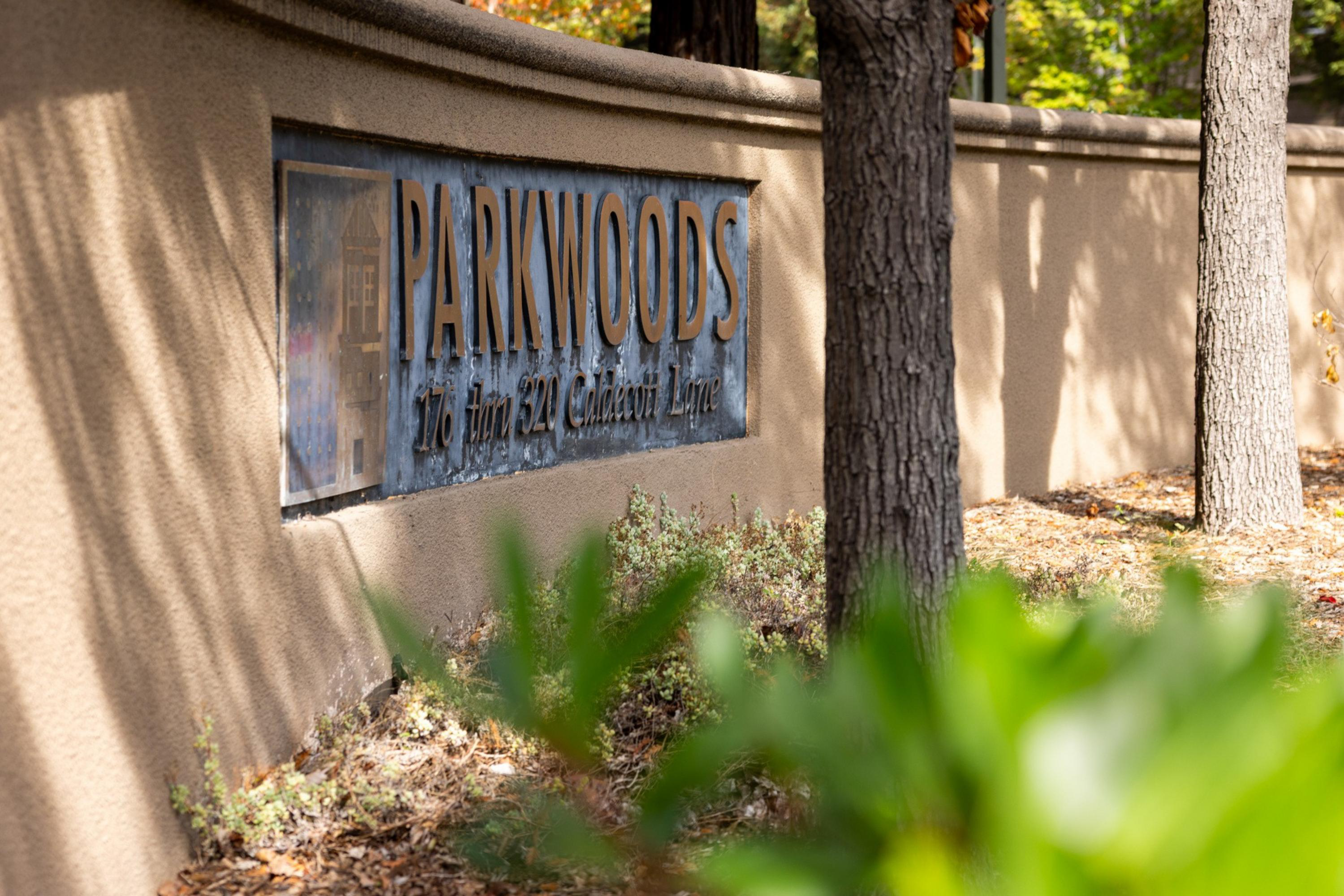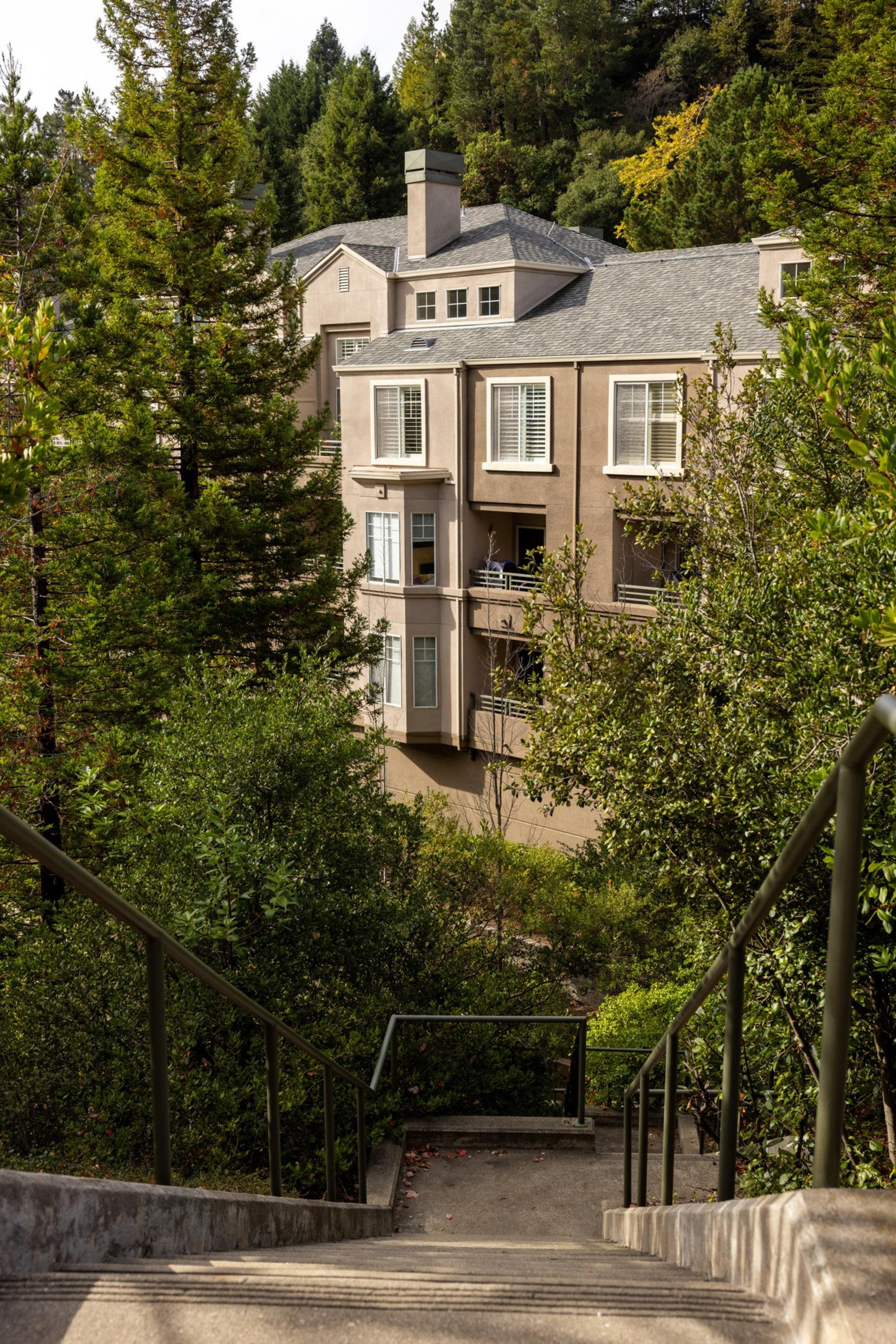When a home abruptly loses hundreds of thousands of dollars of value in the supply-constrained Bay Area, the immediate suspicion is that it has some serious defects.
But in the case of the Parkwoods condo complex, there isn’t anything structurally wrong. The 400-unit community in the Oakland Hills is an idyllic slice of the East Bay, surrounded by evergreens, with breathtaking views, access to hiking trails, and a rapid bus line that runs directly to downtown San Francisco right outside its gate.
The problem is that insurance providers in 2023 decided to drop the property altogether, citing excessive risk of fire hazard. As a result, Parkwoods was blacklisted by the federal government’s housing lenders, Fannie Mae and Freddie Mac, meaning most banks won’t write new mortgages for the property.
Available units at Parkwoods now sit on the shelf longer and sell for less than their pre-pandemic value. Borrowers — especially first-time homeowners, who make up the majority of condo buyers — simply can’t get conventional loans, and sellers have had to drop the asking price dramatically to make up for the lack of insurance and financing.
Here’s one example of how much things have changed at Parkwoods: In 2019, a two-bedroom unit (opens in new tab) sold for $640,000 three weeks after being listed. This July, it sold again for $498,000 after a four-month listing process in which multiple offers fell through just before the finish line.
Before Farmers Insurance abandoned the complex in 2023, Parkwoods had a policy that covered up to $155 million in damages, at an annual cost of $400,000. Simple math values the eight-building property at around $200 million.

Being dropped by its carrier kicked off a desperate rush by the homeowners association to find any sort of coverage. The best deal residents could find at the time was a collective policy that covered only $10 million but cost $1.2 million. A year later, the HOA opted to lower residents’ financial burden by buying a policy with a mere $2.5 million in coverage that cost everyone $900,000.
“People are baffled by the prices,” said broker Ina Daniliuk, who bought a condo at Parkwoods a decade ago and has helped several of her neighbors sell their units. “They’re losing, in some cases, 30% in value while paying more money for a fraction of the protection.”
Part of the problem is the area’s fire history. Parkwoods is located less than a mile from the site of the 1991 Oakland Hills firestorm, which burned 1,500 acres, destroyed more than 3,000 homes, and killed 25 people.
The fact that the complex was built seven years after the tragedy, using fire-resistant materials and methods, failed to convince insurers that Parkwoods isn’t a significant risk. The legacy of the disaster — which caused an estimated $1.5 billion in damage — haunted insurance providers, who flagged the area, with its steep topography and forestation, as a likely place for history to repeat itself.
“It was just denied, denied, and denied,” Daniliuk said of the monthslong scramble to replace Farmers Insurance two years ago. “Everyone was panicking like it was the early days of Covid.”
The HOA did everything it could. It had fire-proof roofs installed in 2016, passed every sprinkler system inspection, and even brought in herds of goats every year to naturally maintain the hillside. None of that mattered to insurance providers. Mainstream carriers had already redlined condos in the area; others left the state altogether.
“It doesn’t matter if we cover this place in diamonds; the insurance companies still wouldn’t care,” Daniliuk said.
From redlined to blacklist
Condos, which have traditionally provided an affordable path to homeownership, have been snakebitten in recent years as a real estate asset class. Their values have stagnated in comparison to single-family homes in the Bay Area, which continue to increase due to high demand and low supply.
Multifamily properties have different risks. Because the walls and common areas are shared among all residents, what happens to one home affects every home. After a decade marked by disasters such as the beachfront tower collapses in Florida and the broken balcony incident in Berkeley, banks and insurance companies began to pull back from areas or categories out of fears of being on the wrong side of too many bets. Even trivial issues such as building warranty claims were deemed red flags.


Parkwood’s limited fire insurance coverage meant it was placed on a mortgage blacklist by Fannie Mae and Freddie Mac in 2023. Therefore, any buyer would have to pay cash or obtain alternative loans, often requiring higher interest rates and down payments.
According to Boston law firm Allcock Marcus, there are a total of eight Oakland condo properties on the mortgage blacklist. Two, including Parkwoods, were flagged for inadequate insurance, while others were singled out for necessary critical repairs or litigation.
These opaque dynamics have pushed condo prices to the floor in Oakland compared with other parts of the Bay Area. Median condo values in Alameda County are down 11% year-over-year, with the median sale price for a two-bedroom in 2025 at $510,000, according to Homes.com (opens in new tab). The median two-bedroom condo in San Francisco, meanwhile, is worth $972,000, while prices are up 3.1% from the year prior.
California’s insurance crisis shows little sign of letting up, particularly with disasters like the Palisades fire scaring off carriers from writing more policies. Accredited insurers will return to California only if the state allows for rate hikes and more homeowners make their neighborhoods more fire resistant at scale, said Michael Wara of Stanford’s Woods Institute for the Environment.
“Decades ago, the idea of a 100,000-acre fire used to be a once-in-a-career kind of event,” said Wara, who works as a consultant on wildfire and insurance policy. “Now, there can be a couple in a year.”
Moments of massive devastation, he said, can serve as a catalyst for policy and behavioral changes. After the 1991 fire, for instance, the city of Oakland created a special assessment district in the burned area to charge property owners for vegetation management along the narrow evacuation routes. While that doesn’t warrant much merit in the eyes of the insurance industry, it’s a safety measure that will save lives when the next fire strikes.
In response to the ongoing insurance crisis, the California Department of Insurance this year approved a $1 billion request for additional funding (opens in new tab) for the last-resort FAIR Plan and ordered the designation of “wildfire-distressed” areas (opens in new tab) where providers would be prevented from canceling policies, while being required to increase coverage. Full implementation has yet to take place.
Should both of those initiatives come to fruition, it would mean more insurance options for homeowners in places like Parkwoods. In today’s fire insurance market, different tranches of risk are often split between multiple companies. Keeping as many providers in the market as possible lowers the liability for everyone.
Amy Bach, executive director of United Policyholders, a San Francisco-based nonprofit that advocates for insurance consumers, said her networks have picked up small signs of progress in increased availability of purchasable policies in some areas of the state, after two-plus years of total uncertainty.


This year, Liberty Mutual and Safeco added new policies, while some customers of Mercury and CSAA reported getting renewal offers after obtaining a wildfire preparedness certification.
At Parkwoods, the HOA managed to find an umbrella fire insurance policy this year that covers $10 million of damage, with the same premium of $900,000. But the cost of individual home insurance, which every condo owner is responsible for, is also on the rise. Daniliuk estimated that the average premium for each unit has more than tripled from $400 a year to nearly $1,500.
Prior to the insurance woes, Parkwoods averaged around 30 sales a year, with a typical sale cycle of 14 days. Now the annual number is closer to 10, and homes often sit for more than two months on the market. Today, Daniliuk is listing a unit (opens in new tab) she’s sold twice before, most recently in 2023. The owner bought the condo for $500,000 and is asking for 10% less.
“Right now, you can sell at a loss or try to rent it out,” she said. “Either way, pick your poison.”
